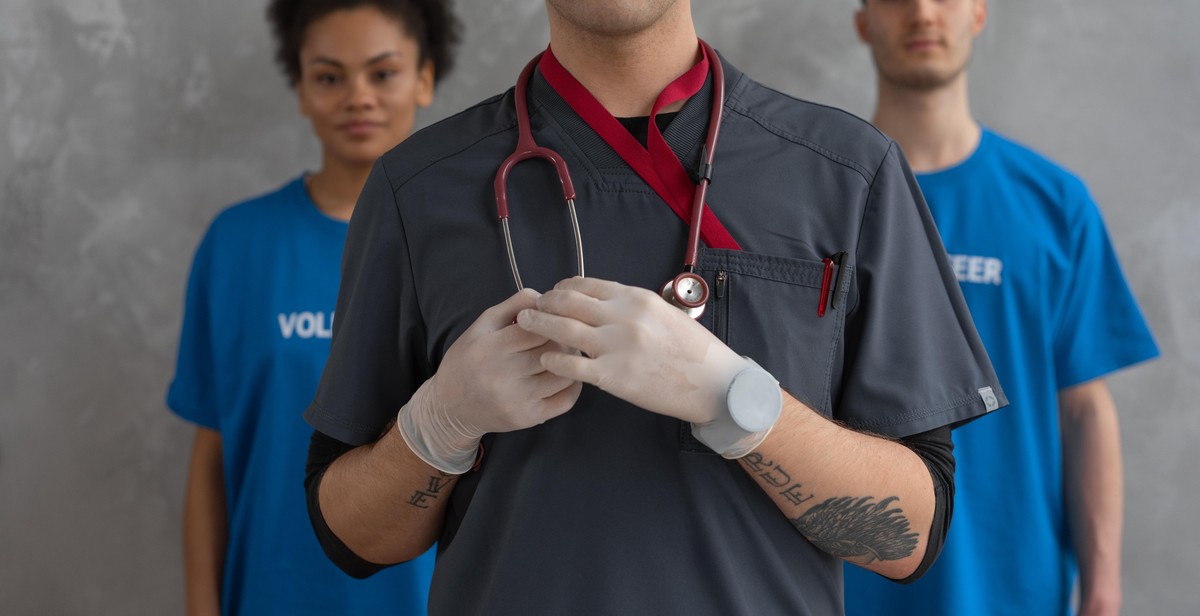How to Create an Effective Hospital Emergency Preparedness Plan
Emergency preparedness is a critical aspect of running a hospital. Hospitals are expected to be ready to respond to any emergency that may arise, whether it’s a natural disaster, a terrorist attack, or a disease outbreak. To be prepared, hospitals need to have an emergency preparedness plan in place. The plan should be comprehensive, covering all possible scenarios, and should be regularly updated to reflect changes in the environment and the latest best practices.
Why is an Emergency Preparedness Plan Important?
An emergency preparedness plan is important for several reasons. First, it ensures that hospital staff is adequately prepared to respond to emergencies. Second, it helps to minimize the impact of the emergency on patients, staff, and visitors. Third, it helps to maintain the hospital’s reputation and credibility by demonstrating that it is well-prepared to handle emergencies.
What Should an Emergency Preparedness Plan Include?
An emergency preparedness plan should include a comprehensive list of emergency scenarios and the appropriate response for each scenario. It should also include a communication plan, evacuation plan, and a plan for managing resources such as staff, supplies, and equipment. The plan should be regularly tested and updated based on the results of the tests.
Overall, creating an effective hospital emergency preparedness plan requires careful planning, attention to detail, and a commitment to continuous improvement. By following best practices and regularly testing and updating the plan, hospitals can be well-prepared to handle emergencies and ensure the safety and well-being of their patients, staff, and visitors.

Why is an Emergency Preparedness Plan Necessary?
An emergency preparedness plan is necessary for hospitals because it helps to ensure patient safety and compliance with legal requirements. Emergency preparedness plans are designed to provide hospitals with a comprehensive framework for responding to emergencies and disasters, including natural disasters, infectious disease outbreaks, and terrorist attacks.
Legal Requirements
Hospitals are required by law to have an emergency preparedness plan in place to ensure the safety and well-being of their patients and staff during an emergency or disaster. The Centers for Medicare and Medicaid Services (CMS) requires that all healthcare facilities participating in Medicare and Medicaid programs have an emergency preparedness plan that meets certain standards.
The CMS Emergency Preparedness Rule requires hospitals to have an emergency preparedness plan that addresses the following four key elements:
- Risk assessment and planning
- Policies and procedures
- Communication plan
- Training and testing
By complying with these legal requirements, hospitals can ensure that they are prepared to respond to emergencies and disasters in a way that meets the needs of their patients and staff while also meeting regulatory requirements.
Patient Safety
Emergency preparedness plans are also necessary for hospitals to ensure patient safety. During an emergency or disaster, hospitals may experience a surge in patient volume, making it critical that they have a plan in place to manage patient care and ensure that patients receive the care they need.
Emergency preparedness plans also help hospitals to identify potential hazards and risks, such as power outages or supply shortages, and develop strategies to mitigate these risks. By having a plan in place, hospitals can ensure that they are able to provide safe and effective care to their patients during an emergency or disaster.
| Benefits of an Emergency Preparedness Plan |
|---|
| Ensures compliance with legal requirements |
| Helps to ensure patient safety |
| Provides a framework for responding to emergencies and disasters |
| Identifies potential hazards and risks |
| Develops strategies to mitigate risks |
Overall, an emergency preparedness plan is essential for hospitals to ensure compliance with legal requirements, protect patient safety, and effectively respond to emergencies and disasters.

Key Elements of an Effective Hospital Emergency Preparedness Plan
An effective hospital emergency preparedness plan is crucial to ensure that healthcare facilities can continue providing necessary medical care during a disaster or emergency situation. The following are the key elements that must be included in a hospital emergency preparedness plan.
Risk Assessment and Hazard Identification
A risk assessment and hazard identification process should be conducted to identify potential hazards and assess their impact on the hospital’s operations. This process should include identifying potential natural disasters, such as floods, hurricanes, or earthquakes, as well as man-made incidents, such as terrorist attacks or chemical spills.
Emergency Operations Plan
The emergency operations plan outlines the hospital’s response to an emergency situation. This plan should include detailed procedures for evacuating patients, transferring patients to other facilities, and securing the hospital’s infrastructure. It should also outline the roles and responsibilities of staff members during an emergency.
Communication Plan
A communication plan is essential for effective emergency management. The plan should include protocols for communicating with staff, patients, families, and external partners, such as emergency management agencies and other healthcare facilities. The plan should also include procedures for maintaining communication during power outages or other disruptions.
Training and Education
Staff members should receive regular training and education on emergency preparedness procedures. This includes training on hazard identification, emergency response, and communication protocols. Regular training and education can help ensure that staff members are prepared to respond to emergencies effectively.
Exercises and Drills
Regular exercises and drills should be conducted to test the hospital’s emergency preparedness plan. These exercises can help identify gaps in the plan and provide opportunities for staff members to practice their roles and responsibilities during an emergency situation.
Evaluation and Improvement
The hospital’s emergency preparedness plan should be regularly evaluated and updated based on feedback from exercises and drills. This process should include identifying areas for improvement and implementing changes to the plan as necessary.
| Key Elements | Description |
|---|---|
| Risk Assessment and Hazard Identification | Identify potential hazards and assess their impact |
| Emergency Operations Plan | Outlines the hospital’s response to an emergency situation |
| Communication Plan | Protocols for communicating with staff, patients, families, and external partners |
| Training and Education | Regular training and education on emergency preparedness procedures |
| Exercises and Drills | Regular testing of the hospital’s emergency preparedness plan |
| Evaluation and Improvement | Regular evaluation and updating of the emergency preparedness plan |

Developing and Implementing an Effective Hospital Emergency Preparedness Plan
Emergency preparedness is a critical component of any healthcare facility’s operations. An effective hospital emergency preparedness plan can help ensure the safety of patients, staff, and visitors during an emergency. The following steps can help healthcare facilities develop and implement an effective emergency preparedness plan:
Identify a Planning Team
The first step in developing an effective hospital emergency preparedness plan is to identify a planning team. This team should be made up of individuals from various departments within the healthcare facility, including clinical, administrative, and support staff. The planning team should also include representatives from local emergency management agencies and other community partners.
Conduct a Risk Assessment and Hazard Identification
The next step in developing an effective hospital emergency preparedness plan is to conduct a risk assessment and hazard identification. This process involves identifying potential hazards and risks that could impact the healthcare facility and its operations during an emergency. The planning team should consider the types of emergencies that are most likely to occur in their geographic area, such as natural disasters, infectious disease outbreaks, or acts of terrorism.
Develop an Emergency Operations Plan
Once the planning team has identified potential hazards and risks, they can begin to develop an emergency operations plan. This plan should outline the procedures and protocols that will be followed during an emergency, including evacuation plans, communication protocols, and patient care procedures. The emergency operations plan should also include provisions for staffing, equipment, and supplies during an emergency.
Develop a Communication Plan
Effective communication is essential during an emergency. The planning team should develop a communication plan that outlines how information will be shared among staff, patients, and other stakeholders during an emergency. The communication plan should also include provisions for communicating with external partners, such as emergency management agencies and other healthcare facilities.
Provide Training and Education
Once the emergency operations plan and communication plan have been developed, it is essential to provide training and education to staff and other stakeholders. This training should include drills and exercises to ensure that everyone knows their roles and responsibilities during an emergency. The training should also include education on the signs and symptoms of various emergencies and how to respond to them.
Conduct Exercises and Drills
The planning team should conduct regular exercises and drills to test the emergency operations plan and communication plan. These exercises can help identify areas for improvement and ensure that staff are prepared to respond to an emergency.
Evaluate and Improve the Plan
Finally, the planning team should regularly evaluate and improve the emergency preparedness plan. This evaluation should include feedback from staff and other stakeholders and should identify areas for improvement. The planning team should then make changes to the plan as needed to ensure that it remains effective and up-to-date.
| Steps to Develop and Implement an Effective Hospital Emergency Preparedness Plan |
|---|
| Identify a Planning Team |
| Conduct a Risk Assessment and Hazard Identification |
| Develop an Emergency Operations Plan |
| Develop a Communication Plan |
| Provide Training and Education |
| Conduct Exercises and Drills |
| Evaluate and Improve the Plan |

Conclusion
In conclusion, an effective hospital emergency preparedness plan is crucial in ensuring that healthcare facilities are well-equipped to handle emergencies and disasters. The plan should involve all the stakeholders, including hospital administrators, medical personnel, first responders, and the community. It should also be regularly reviewed and updated to ensure that it aligns with the latest best practices and guidelines.
When creating a hospital emergency preparedness plan, it is important to identify the potential risks and hazards that the hospital may face and develop strategies to mitigate them. The plan should also include clear communication channels, evacuation procedures, and protocols for managing patients and supplies during emergencies.
Training and drills are critical in ensuring that all personnel are adequately prepared to respond to emergencies. The plan should also be tested regularly to identify any gaps and areas that need improvement.
Finally, it is important to note that emergency preparedness is an ongoing process, and hospitals should continuously evaluate and improve their plans to ensure that they are ready to handle any emergency or disaster that may arise.
Key Takeaways
- An effective hospital emergency preparedness plan involves all stakeholders, including hospital administrators, medical personnel, first responders, and the community.
- The plan should be regularly reviewed and updated to align with the latest best practices and guidelines.
- It is important to identify potential risks and hazards and develop strategies to mitigate them.
- Training and drills are critical to ensure that all personnel are adequately prepared to respond to emergencies.
- Emergency preparedness is an ongoing process, and hospitals should continuously evaluate and improve their plans.
| Emergency Preparedness Checklist |
|---|
| Identify potential risks and hazards |
| Develop strategies to mitigate risks |
| Create clear communication channels |
| Establish evacuation procedures |
| Develop protocols for managing patients and supplies during emergencies |
| Train and drill personnel regularly |
| Regularly review and update the plan |
